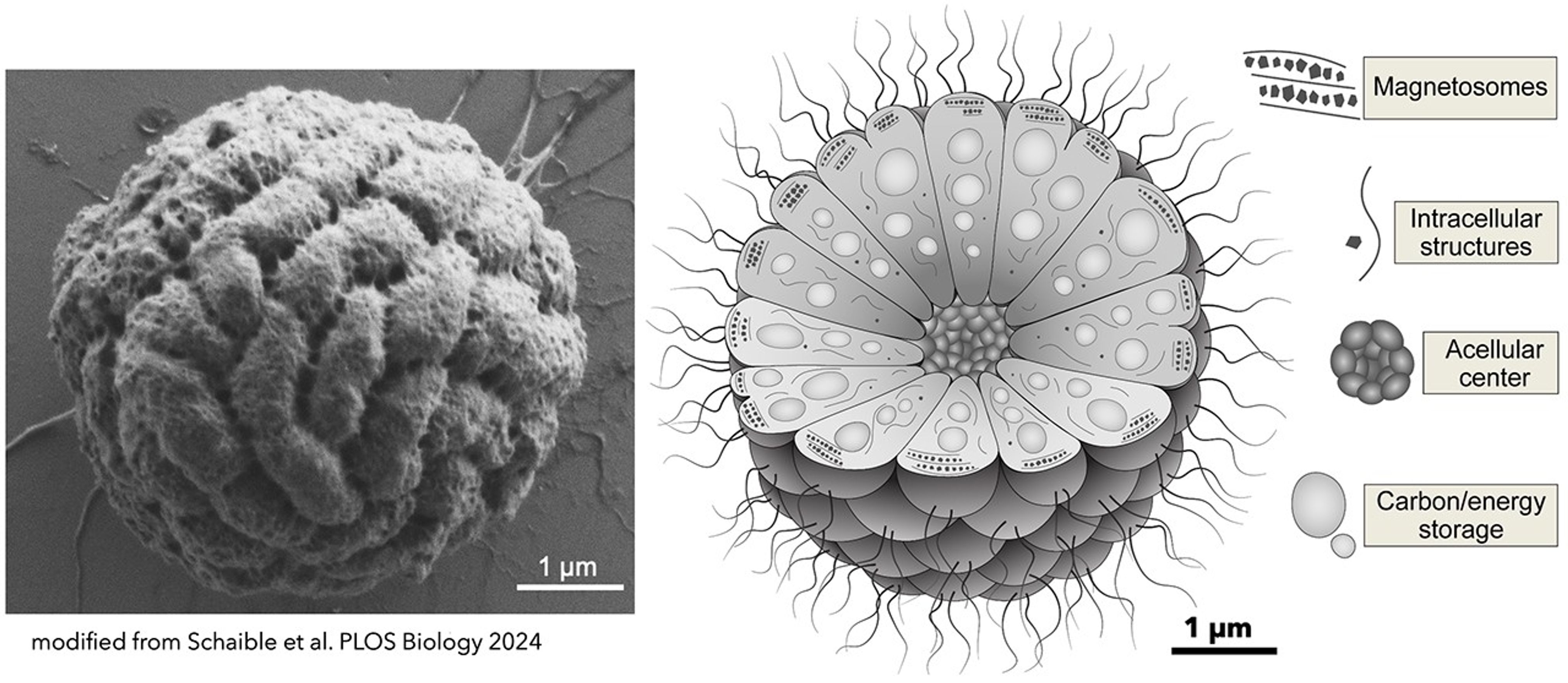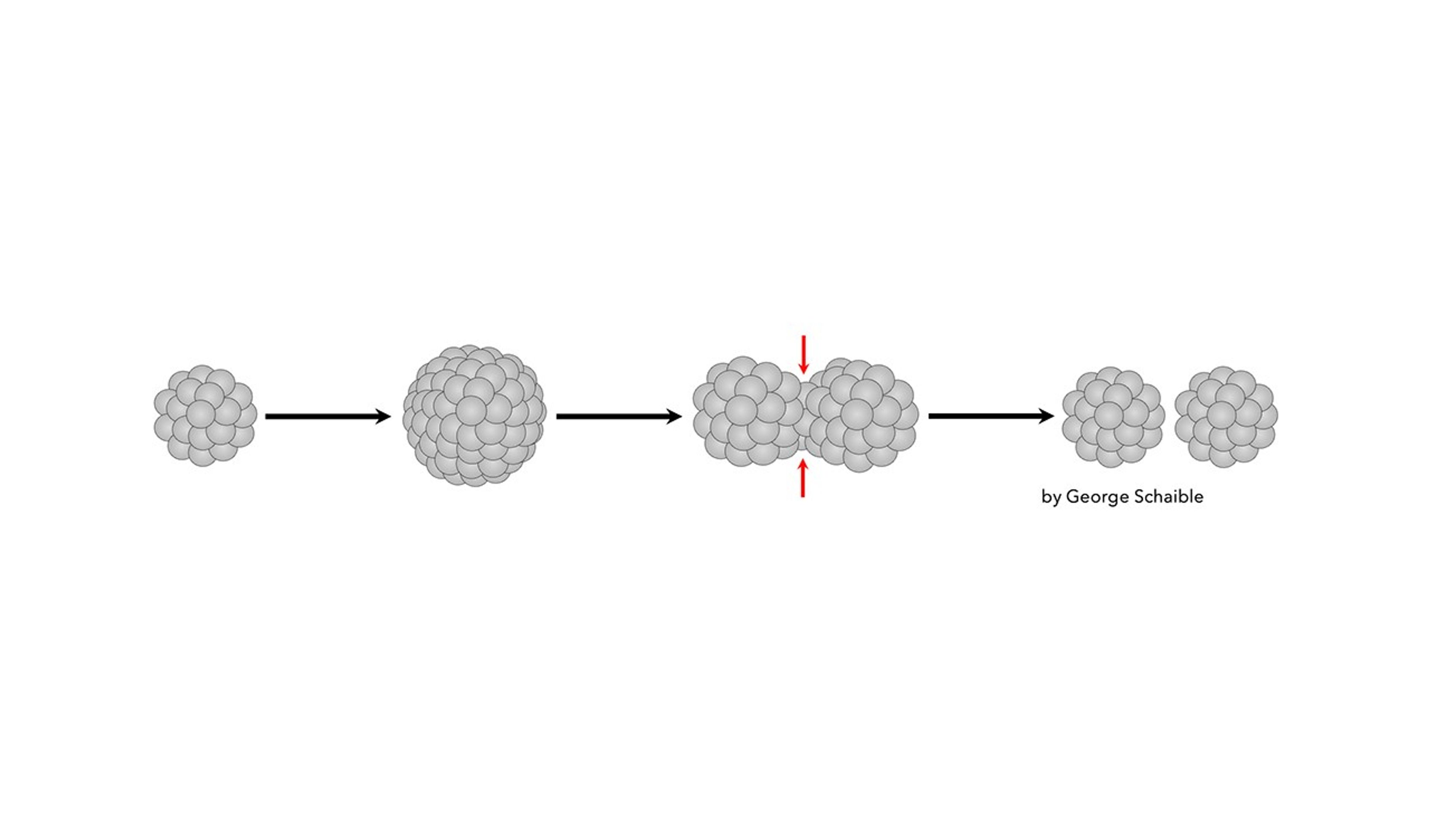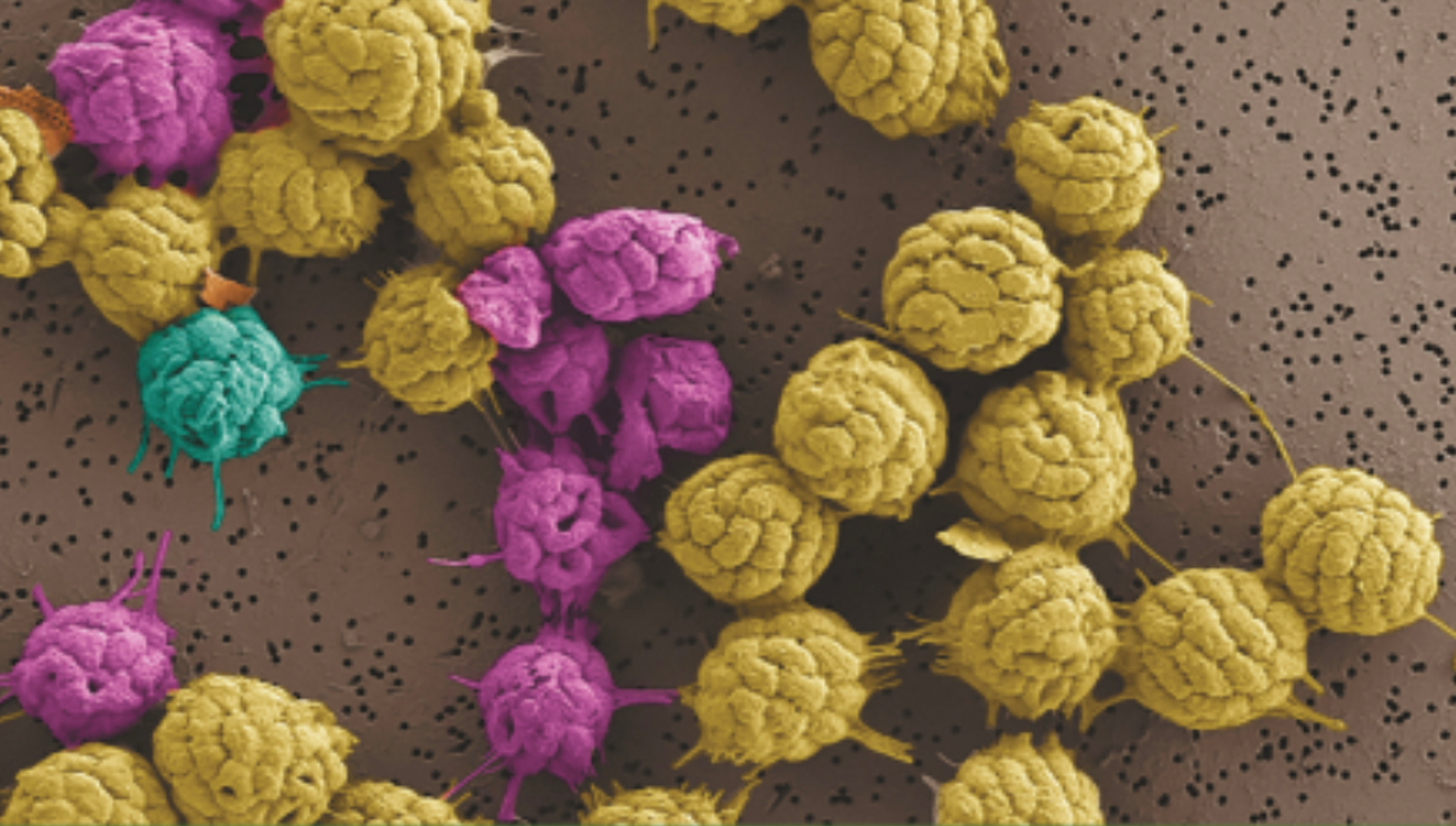In her book "Beyond Anxiety: Curiosity, Creativity and Finding Your Life's Purpose," the sociologist and life coach Martha Beck describes two different ways humans group in society: One structure is based on rigid rules, such as government systems, and the other, called a "social cell," is based on personal ideals. These idealistic, so-called social cells don’t have a clear leader. Instead, they move toward a common goal driven by a desire for connection.
While it's not exactly a social science, it turns out bacteria have their own versions of these social structures, too — and because the earliest fossil evidence for life on our planet was indeed bacterial, studying how bacteria live together may help microbiologists piece together how life began on Earth long ago. One day, it may help us discover life on other planets.
Along these lines, in research published last year, scientists took a closer look at the behavior of a type of bacteria called multicellular magnetotactic bacteria (MMB). What they found was fascinating: MMB has a peculiar way of grouping. Despite each member of this bacterial clan existing as a single-celled organism, none of them can survive that way. Instead, they combine together and act as one giant, multicellular organism that scientists call "consortia."
Another special element of MMB is the "magnetotactic" in its name, which means it orients itself based on Earth's magnetic field. If you compare MMB to a social cell of people, which shifts toward a social ideal, MMB orients itself and knows where to be based on the Earth's magnetic poles.
MMB lands "somewhere in-between a single-celled organism and much more complex life" Roland Hatzenpichler, a microbiologist and associate professor in the Department of Chemistry and Biochemistry at Montana State University, Bozeman and author of the new research, told Space.com. He described the consortia as "anywhere from 30 to 100 cells" living together. The sheer existence of MMB also suggests they may be caught in one of the "bottlenecks" of life formation on Earth, according to Hatzenpichler.
In other words, perhaps MMB is caught in a stage of evolution between a single-celled organism and a more complex, multicellular form of life, like an insect or a fish..
In other words, perhaps MMB was not meant to be a single-celled organism, but just couldn't transition to its multicellular future.
MMB doesn't just want to stay connected — it needs to for survival.
Where is MMB found?
The study researchers got their MMB samples from a tidal pool in Massachusetts, which Hatzenpichler is a known site for purple sulfur bacteria. He described the sediment containing the MMB as brown with purple dots.
"The pond itself is basically just this brownish, gooey sediment," Hatzenpichler said. "Sprinkled in are these purple bacteria."

In terms of all known life on Earth, there's really no other organism that compares to MMB, Hatzenpichler said.
There are different species of MMB, Hatzenpichler said, "but they are all pretty related to each other."
Working together; dying together
Compared to single-celled organisms, which can swim freely using their whip-like tails known as "flagella," MMB have some communicating to do in order to move. Otherwise, there would be a conflict of interest, so to speak.
"If the whole thing moves right, it means that the bacterial cells on one side need to stop spinning, or spin the other direction than the ones on the opposing side," Hatzenpichler said.
He explained that in order to pull this off, there "must be some quick social interaction at the very least to communicate, 'okay, who is swimming forward now and who is not doing that.'"
This type of social cuing between bacteria isn't completely unique, though. Hatzenpichler said a bacterial social cueing phenomenon called "quorum sensing" has been studied for a while, and usually dictates movement or helps bacteria discern how many of their own kind are around them. Disease-causing bacteria, for example, may benefit from sticking together as it makes it harder for the immune system to attack, Hatzenpichler explained.
But what is the purpose of MMB — or of multicellular structures that aren’t exactly multicellular? According to Hatzenpichler, scientists don't exactly know. An obvious con is that if a cell ever wants to live individually again, for whatever reason, they can't.
"It's good to work together, right?" Hatzenpichler said. However: "At some point it might not be beneficial anymore to stick around with your buddies. But if you don't, you die."

But cooperating together may also be advantageous if you're able to split up the work. And, on a much smaller scale, scientists may eventually find that what happens in MMB consortia could mirror the different jobs cells have in the human body.
"Your heart cells do something completely different than your brain cells, which are completely different than the lung and so on," Hatzenpichler said. More studies are needed to see if there is such a "mutually exclusive" relationship with MMB, as has been seen among other organisms that don't have an obligate multicellular lifestyle. (Obligate is the scientific term that means the MMB can’t survive if separated as a single cell.)
"We're not there yet, but I think this is basically where the research is going now," he said.
Life formation and being 'more than the sum of parts'
Perhaps the most beautiful thing about MMB is that it poses philosophical questions as well as scientific ones: Is it multicellular or not, and what does MMB say about life that's more complicated than bacteria?
"You could see this entirety of 50 cells as one organism, so to speak, because individually, they die if they separate — they show unified behavior towards a common goal," Hatzenpichler said.
"I think the same argument can be made for an animal," he said. "Sometimes our cells fight for our overall health, and other times, they don’t."
Another takeaway from the latest research on MMB is what it suggests about life formation in general, and how life can build very complex structures out of something comparatively simple, Hatzenpichler said. In the future, it's possible more research on unique organisms like MMB may even aid discovery of life outside Earth.
"You have this emergent phenomena that comes out of that, where the system is more than the sum of its parts."
The team's research was published on July 11, 2024 in the journal PLOS Biology.
.png)
 German (DE)
German (DE)  English (US)
English (US)  Spanish (ES)
Spanish (ES)  French (FR)
French (FR)  Hindi (IN)
Hindi (IN)  Italian (IT)
Italian (IT)  Russian (RU)
Russian (RU) 








Comments